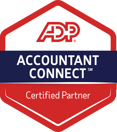How to Reduce the AMT Burden
Jay Mims
9/11/20242 min read
Avoiding or minimizing the Alternative Minimum Tax (AMT) requires careful tax planning, as it often applies when specific deductions, credits, or income types trigger a higher tax liability under the AMT system. Here are strategies to help avoid or reduce the impact of the AMT:
1. Monitor Your Income and Deductions
Plan around high-income years: If possible, spread income over multiple years to avoid spikes in income that could trigger the AMT. For instance, managing the timing of bonuses, exercising stock options, or recognizing capital gains in years when your income is lower can help.
Consider the AMT impact of large deductions: Certain deductions that are favorable under the regular tax system, like state and local taxes (SALT) or medical expenses, are disallowed or reduced under the AMT system. Be cautious about stacking these deductions in one year, as it could trigger AMT.
2. Time Exercising Incentive Stock Options (ISOs)
Exercise ISOs strategically: The spread between the exercise price and the market value of ISOs is considered income under the AMT. To minimize this, consider exercising a portion of your ISOs over several years rather than all at once.
Wait to sell: If you exercise ISOs, you might want to hold the shares for at least one year after the exercise to qualify for long-term capital gains, which are generally taxed at a lower rate under the regular tax system.
3. Manage Deductions and Credits
Carefully monitor state and local taxes (SALT): The AMT disallows the SALT deduction, so paying significant state or local taxes (such as prepaying property taxes) in a single year can trigger AMT. Timing these payments to avoid large deductions in a single year may reduce AMT exposure.
Maximize retirement plan contributions: Contributions to tax-deferred accounts like 401(k)s, IRAs, or HSAs reduce your taxable income under both regular and AMT systems, helping lower your overall tax liability.
4. Use Qualified Charitable Contributions
Donate to charity: Charitable contributions are deductible under both the regular tax system and the AMT, so making larger charitable donations in a high-income year can reduce your exposure to AMT.
5. Review Capital Gains Timing
Spread capital gains over time: Large capital gains can push you into AMT territory, so selling investments over several years instead of all at once can help smooth out taxable income and reduce AMT liability.
Tax-loss harvesting: Use investment losses to offset capital gains. Realizing losses can help reduce overall taxable income, especially in years when large capital gains would otherwise trigger AMT.
6. Limit Miscellaneous Deductions
Avoid excessive unreimbursed business expenses: Miscellaneous deductions such as employee business expenses, tax preparation fees, and investment management fees are disallowed under the AMT. Reducing or deferring these expenses can lower your AMT liability.
7. Consider a Roth Conversion
Convert traditional IRA to Roth IRA: Roth IRA withdrawals are not taxable under either the regular or AMT system, so converting a traditional IRA to a Roth IRA can help you avoid taxable income that might push you into AMT in future years.
8. Check AMT Exemption Phase-Out
Monitor the exemption limits: The AMT system allows for an exemption that reduces taxable income under the AMT. However, this exemption phases out at higher income levels, so careful income planning can help you stay within the exemption range.
9. Use Tax Software or Consult a Tax Professional
Run AMT projections: Tax software can help you estimate whether you'll be subject to AMT based on your current income, deductions, and credits. If AMT is likely, adjusting your financial decisions during the year can help minimize or avoid it.
Consult a tax advisor: A tax professional can provide personalized advice and help you implement strategies that minimize AMT liability based on your specific financial situation.
While avoiding AMT entirely might not be possible in some cases, implementing these strategies can help reduce the likelihood of being subject to the AMT or minimize the additional tax burden.

Credentials
CPA # 44657
QuickBooks Pro Advisor
Schedule a meeting
386-846-9140
jay@integralcpa.com
128 Orange Ave
Daytona Beach, FL 32114
© 2025. All rights reserved.






